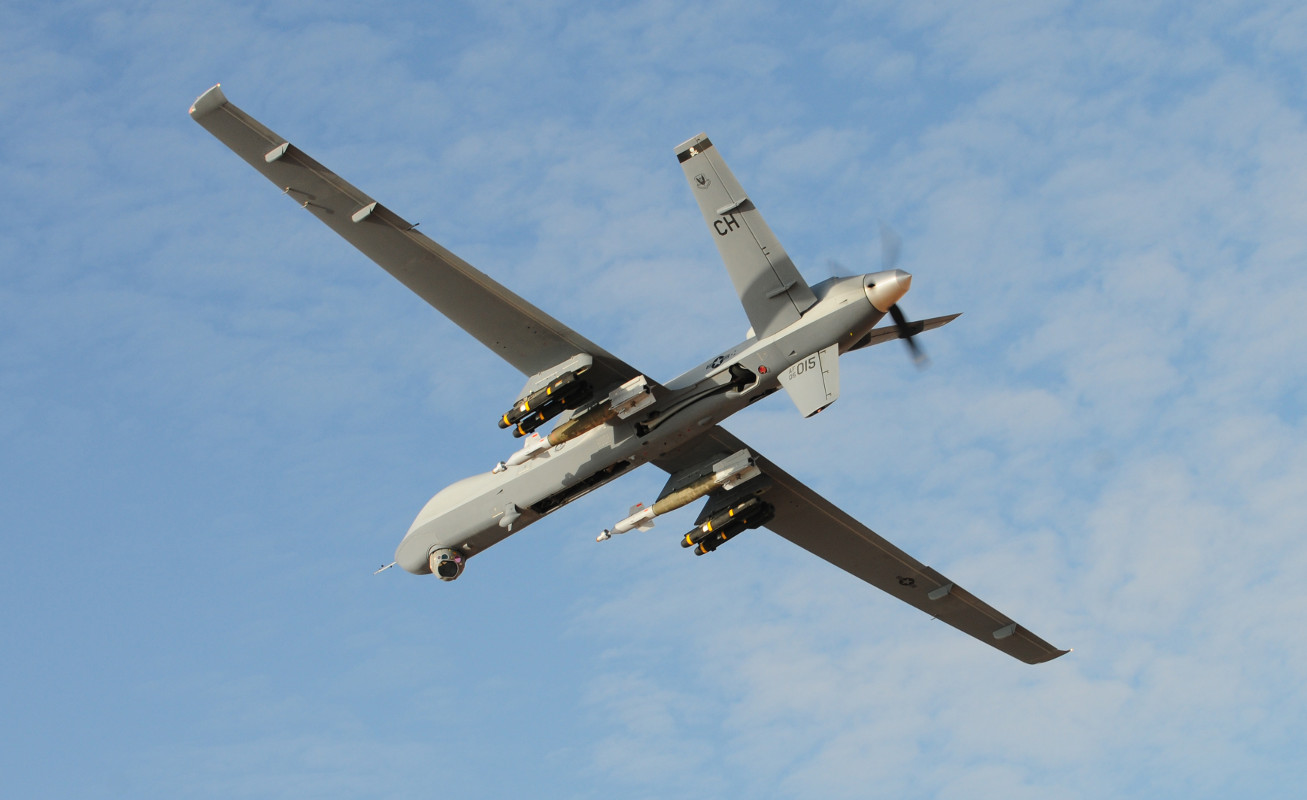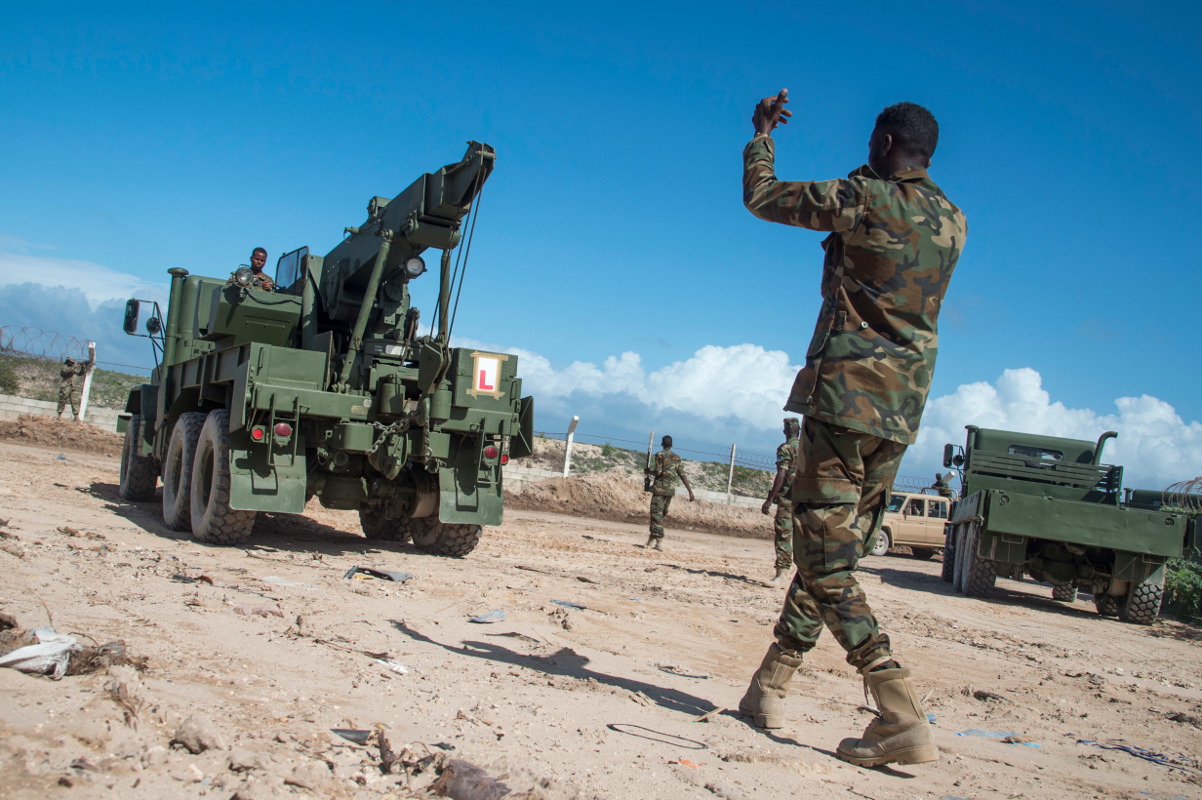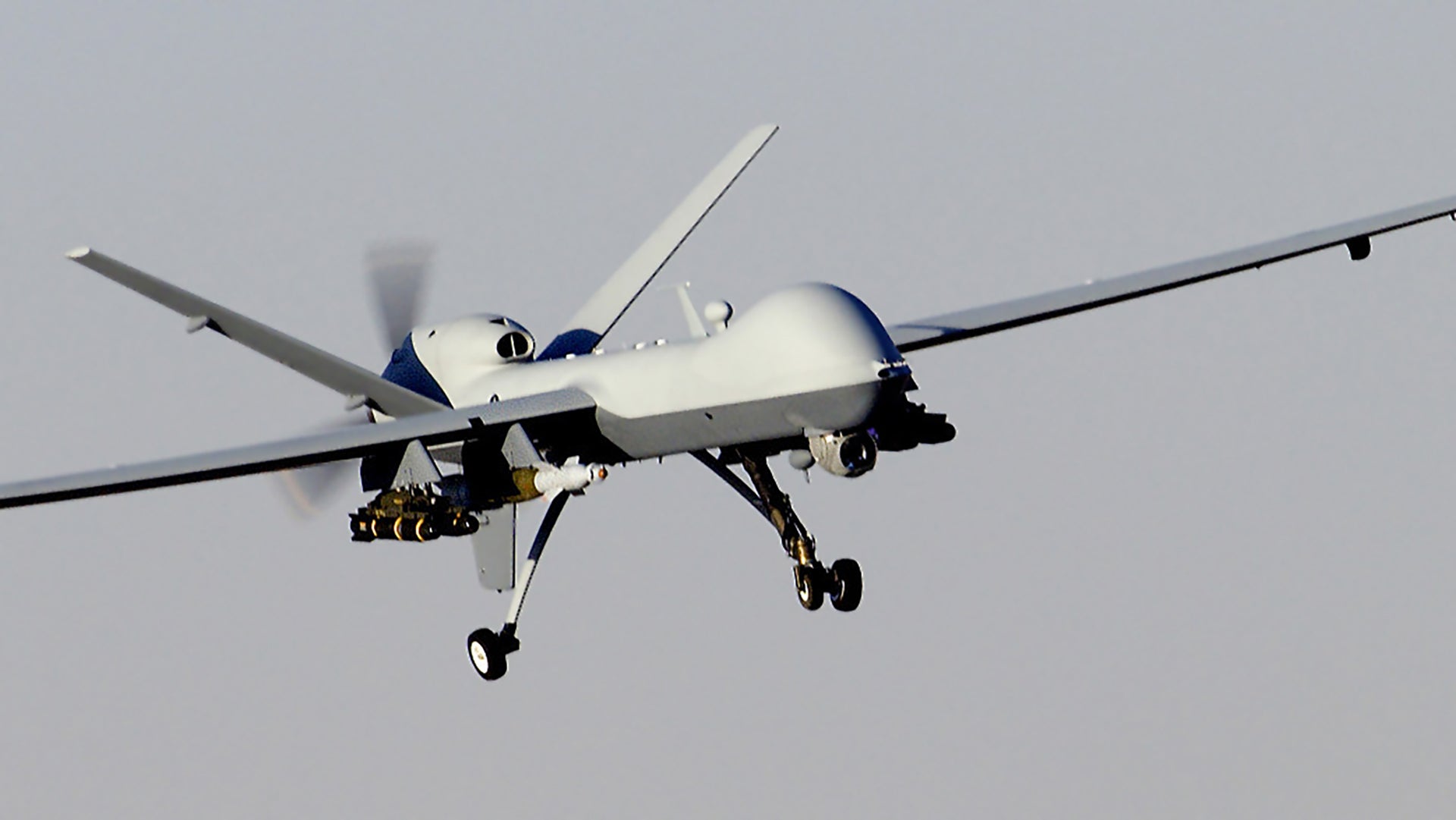The U.S. military has conducted the first airstrike against Al Shabaab terrorists in Somalia since President Trump granted new authorities and designated part of the country as an “area of active hostilities.” The mission is the latest evidence of a campaign against the group’s leadership on the part of the United States, the African Union Mission in Somalia (AMISOM), and the Somali government, which may actually be almost a year old already.
One June 11, 2017, American drones – possibly U.S. Air Force MQ-9 Reapers from the base at Chabelley Air Field in Djibouti – hit what U.S. Africa Command (AFRICOM) described as a “command and logistics node” 185 miles south of the Somali capital Mogadishu. The command did not give any details about the “precision” weapons they employed, but estimated that eight members of Al Shabaab had died in the strike.
“U.S. forces, in cooperation with the Government of Somalia, are conducting operations against al-Shabaab in Somalia to degrade the al-Qaeda affiliate’s ability to recruit, train and plot external terror attacks throughout the region and in America,” an AFRICOM press release explained. “The group has cemented its control southern and central Somalia, they have used this area to plot and direct terror attacks, steal humanitarian aid, and to shelter other radical terrorists.”
“The U.S. conducted this operation in coordination with its regional partners as a direct response to al-Shabaab actions, including recent attacks on Somali forces,” Pentagon Chief Spokesperson Dana White wrote in a separate statement. “This strike was conducted with the authorities approved by the President [Donald Trump] in March 2017, which allows the U.S. Department of Defense to conduct legal action against al-Shabaab within a geographically-defined area of active hostilities in support of partner force in Somalia.”

However, the nature of the operation and its location, combined with information from previous reports, suggests this may have been an attempt to target Al Shabaab leadership figures rather than just a punitive response. Regardless of how you measure the distance, 185 miles southwest of Mogadishu brings you relatively close to the town of Jilib, the terrorist group’s main stronghold in southern Somalia. In an Email to the War Zone, U.S. Army Captain Jennifer Drycz, an AFRICOM spokesperson, said the official distance between the two cities was 230 miles and that the strike was not technically in “the same vicinity” of Jilib.
The body count of just eight fighters points to a very limited precision attack rather than a broad strike on a militant encampment. In March 2016, the Pentagon acknowledged an attack on an Al Qaeda in the Arabian Peninsula training camp in Yemen, which resulted in the deaths of dozens of terrorists. The obtuse target description may indicate U.S. forces missed the individuals they had intended to kill. Prior to the mission, there seemed to be an uptick in reports of surveillance missions and possible strikes in and around Jilib specifically stretching back nearly a year.
In August 2016, Al Shabaab burned three private cars outside Jilib, because the militants were convinced U.S. forces had installed tracking devices inside them. The group reportedly became suspicious after spotting surveillance drones circling the vehicles in question. Three months later, the terrorists released a video of a Tanzanian citizen confessing, possibly under duress, to being a spy for both the United States and Rwanda. Before his execution by firing squad, Issa James Mwaisige said he had received $4,000 to gather various types of information, including details about the group’s top leadership.

Perhaps more interestingly, AFRICOM has pointedly denied the United States was involved in any airstrikes in Somalia since an attack on September 16, 2016 that went awry and killed more than a dozen members of a local, government-aligned security force in Galkayo, northeast of Mogadishu. On April 17, 2017, the command released a statement saying it had not been involved in any way in strikes three days earlier, which local witnesses said resulted in the deaths of two Al Shabaab senior leaders. On June 4, 2017, the U.S. military again said it was not behind reported airstrikes in Somalia that day. Local media claimed foreign warplanes had hit terrorists in Welmarow – which they described as being near Jilib, despite being approximately 40 miles away – after which special operations forces moved in and attacked the remaining militants.
The Kenyan Air Force, which is known to conduct aerial attacks in Somalia from time to time, may have been responsible in both of these cases, but whoever was responsible could have at least coordinated with or received intelligence from American forces beforehand. “US forces closely coordinated with the Federal Government of Somalia but for operational security reasons we will not go into specifics on coordination,” Captain Drycz said of the June 11 strike in her Email.

Be sure to check out the latest version of our interactive Google Map showing where the U.S. military is operating in Africa.
It’s something of an open secret that the U.S. military, and more specifically the secretive Joint Special Operations Command (JSOC), has been conducting targeted strikes against Al Shabaab since the group formed itself from the remnants of the Islamic Courts Union in 2006. The War Zone has already written in depth about this shadowy campaign and the history of America’s military involvement in Somalia in general.
In July 2015, citing Somali and African Union officials, Foreign Policy first reported the existence of JSOC personnel situated at the airports in Baledogle, northwest of Mogadishu, and in the port city of Kismayo, which sits about a 100 miles from the Kenyan border. You can see the relative position of these sites, as well as other mentioned in this story, on our custom Google Map of America’s military presence across Africa.

The Foreign Policy story suggested that the American special operators might have been flying drones of some description from within the country. In addition, the elite American troops came to share Baledogle with a new Somali special operations unit called Danab, meaning “lightning.” Modeled after the U.S. Army’s Rangers, the group has reportedly received training from both the U.S. military directly and from a U.S.-based private military company, Bancroft Global Development. There was additional evidence that the Central Intelligence Agency had already been involved in the creation of a counter-terrorism rapid reaction force within Somalia’s National Intelligence and Security Agency (NISA), sometimes referred to just as the Somali National Security Agency (SNSA), known as Gaashaan, or “shield.”
Then, in October 2015, The Intercept published a series of pieces, dubbed the “Drone Papers,” based leaked of documents that in part covered JSOC activities in and around Somalia. Classified briefings from 2013 identified a unit called Task Force 48-4, which was conducting targeted strikes in both Yemen to Somalia from a host of bases in East Africa. The Somalia mission was nicknamed Operation Jupiter Garrett. Though the leaks did not show any operational sites in Somalia proper, they did present a picture of precision attacks on Al Shabaab targets based on intelligence gathered in part by both drones and manned spy planes, including contractor-operated aircraft flying from a remote base in Manda Bay Kenya.
As of December 2014, Jupiter Garrett was still an active mission, per information the author separately obtained through the Freedom of Information Act. Earlier in June 2017, the Defense Logistics Agency posted contracting documents online that, for the first time, seemed to officially confirm the existence of the JSOC sites, outlining the fuel requirements for unspecified “American Camps” in Baledogle and Kismayo, as well as a third location with that nomenclature at Mogadishu’s Aden Adde International Airport.
So, though the Trump Administration gave the Pentagon new authorities with which to fight Al Shabaab in March 2017, it is clear that Task Force 48-4 and its partners had already been taking the fight to the group for years. In addition to airstrikes, there were a number of special operations raids, including notable successes and failures. Most recently, on May 4, 2017, a U.S. Navy SEAL died during an air assault with Somali forces – possibly troops from Danab or Gaashaan – into the town of Barii, approximately 40 miles west of Mogadishu.

The United States and AMISOM are undoubtedly looking to step up the pressure on Al Shabaab in general with hopes of finally breaking up the group for good. In October 2018, the African Union plans to begin drawing down its commitment, with the goal of ending its peacekeeping mission entirely in 2020. At that point, African security forces from more than a half dozen nations will have spent more than a decade working to stabilize the fragile country.
At the same time, Somalia’s international partners seem focused on improving the quality of its armed forces and its special operations in particular. Ostensibly to help get Somalia’s National Army ready to take over, on April 2, 2017, approximately 40 soldiers from the U.S. Army’s 101st Airborne Division arrived in the country for what the Pentagon described as logistics training. Official pictures of the practice sessions subsequently showed troops from the 101st and American special operators teaching Danab’s support elements how to conduct long-range ground convoy operations, which could improve the unit’s mobility in the absence of foreign helicopter support.
So, regardless of how the June 2017 strike and the Trump Administrations new authorities actually fit in with the larger operational plan, all the evidence indicates the U.S. military will only continue expanding targeted strikes against Al Shabaab’s leadership and its remaining strongholds throughout southwestern Somalia in the near future.
Contact the author: joe@thedrive.com
